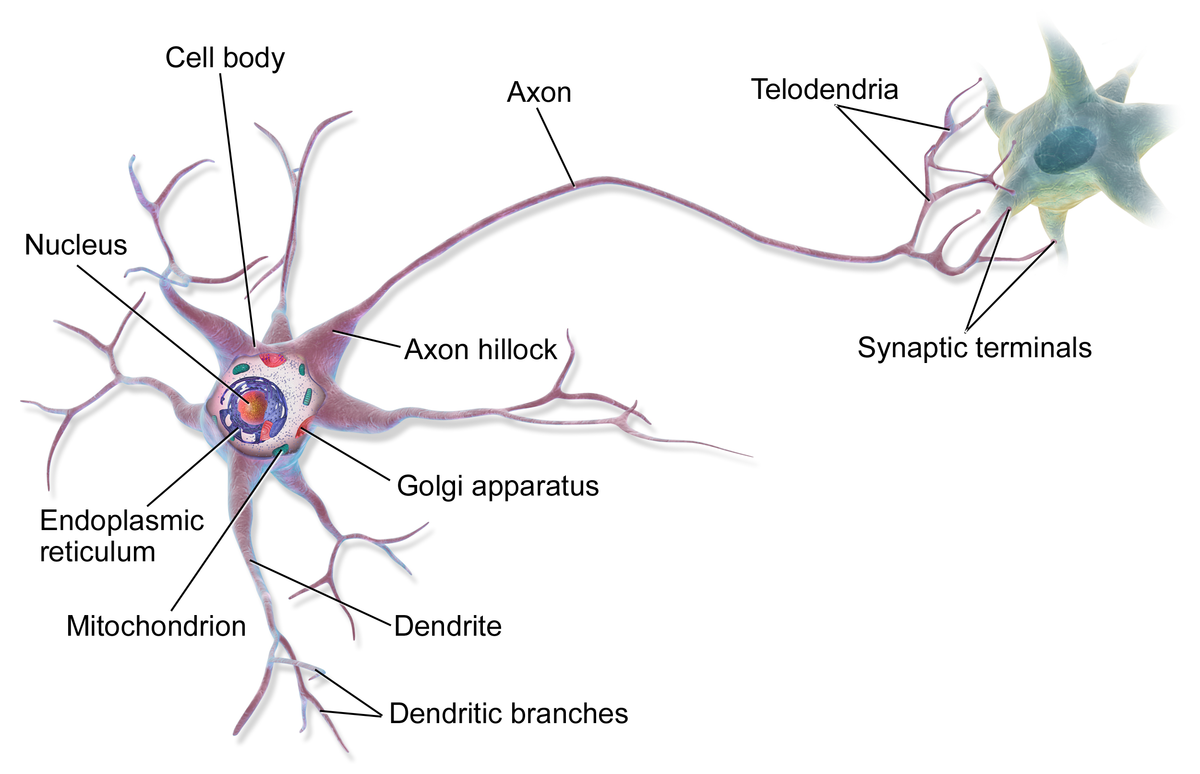While I have touched apon the abstract idea of a synthetic neuron in the context of machine learning, I have done little to learn about the biological side of things, and how this behavior emerges from physical phenomena.

In biology, a neuron serves as the basic building block of the nervous system. It is a specialized cell that is capable of transmitting electrical signals and communicating with other cells. Neurons are responsible for processing and transmitting information throughout the body, and they play a crucial role in various functions such as movement, sensation, and cognition.
Where in machine learning we would have thought of the connections between neurons as weights, in biology these connections are called Synapses. These synapses are the points of communication between neurons, where electrical signals are transmitted from one neuron to another. The strength of these connections can change over time, allowing for learning and memory formation.
Types of Neurons
The machine we call the brain isnt really the general purpose machine we think it is. It is composed of a large variety of different types of neurons, each with its own unique structure and function.
Pacemaker Neurons
One example of this is found in the Medial Septum, which contains a type of neuron called Pacemaker Neurons. Pacemaker neurons are responsible for generating rhythmic patterns of activity in the brain, such as the theta rhythm that is associated with memory and navigation.